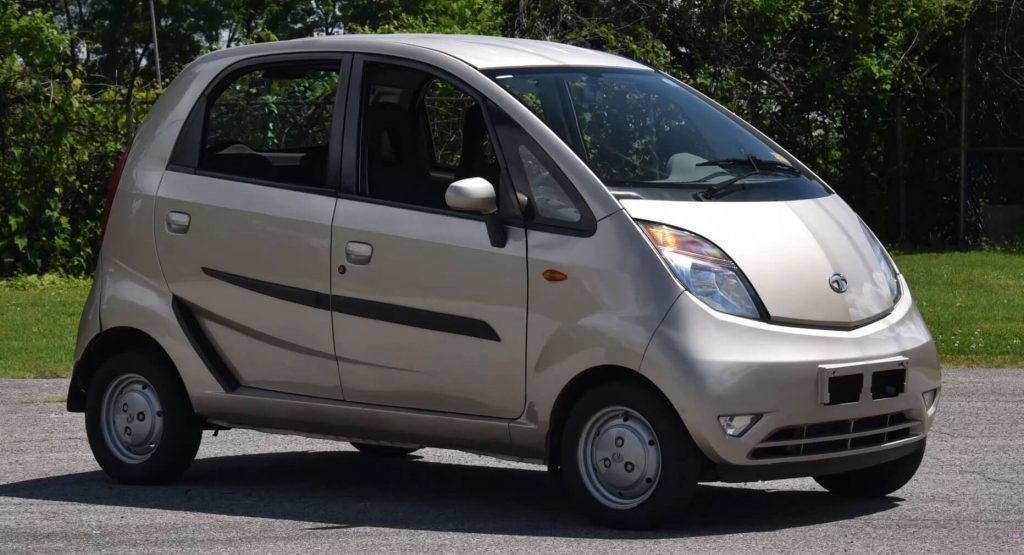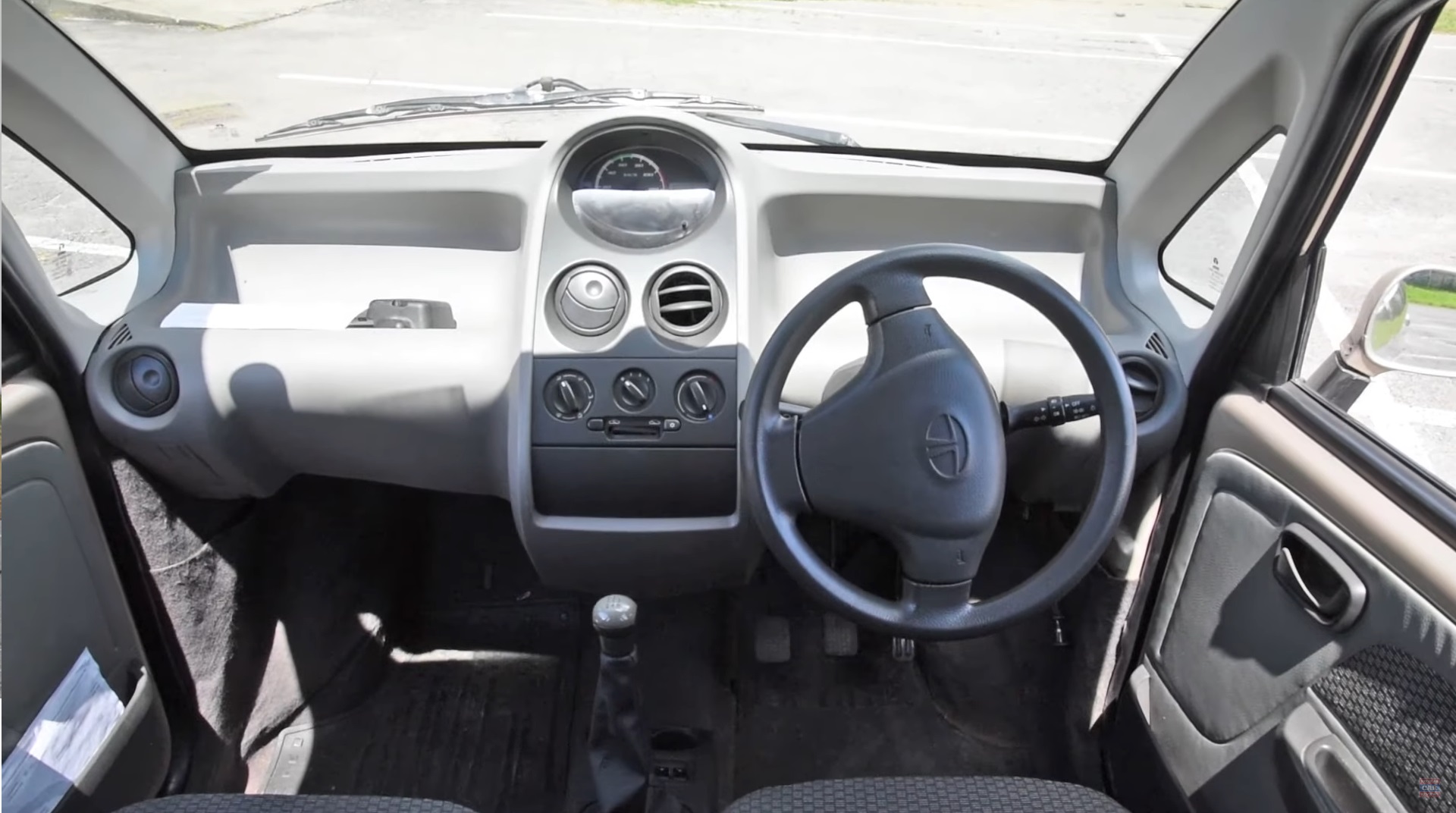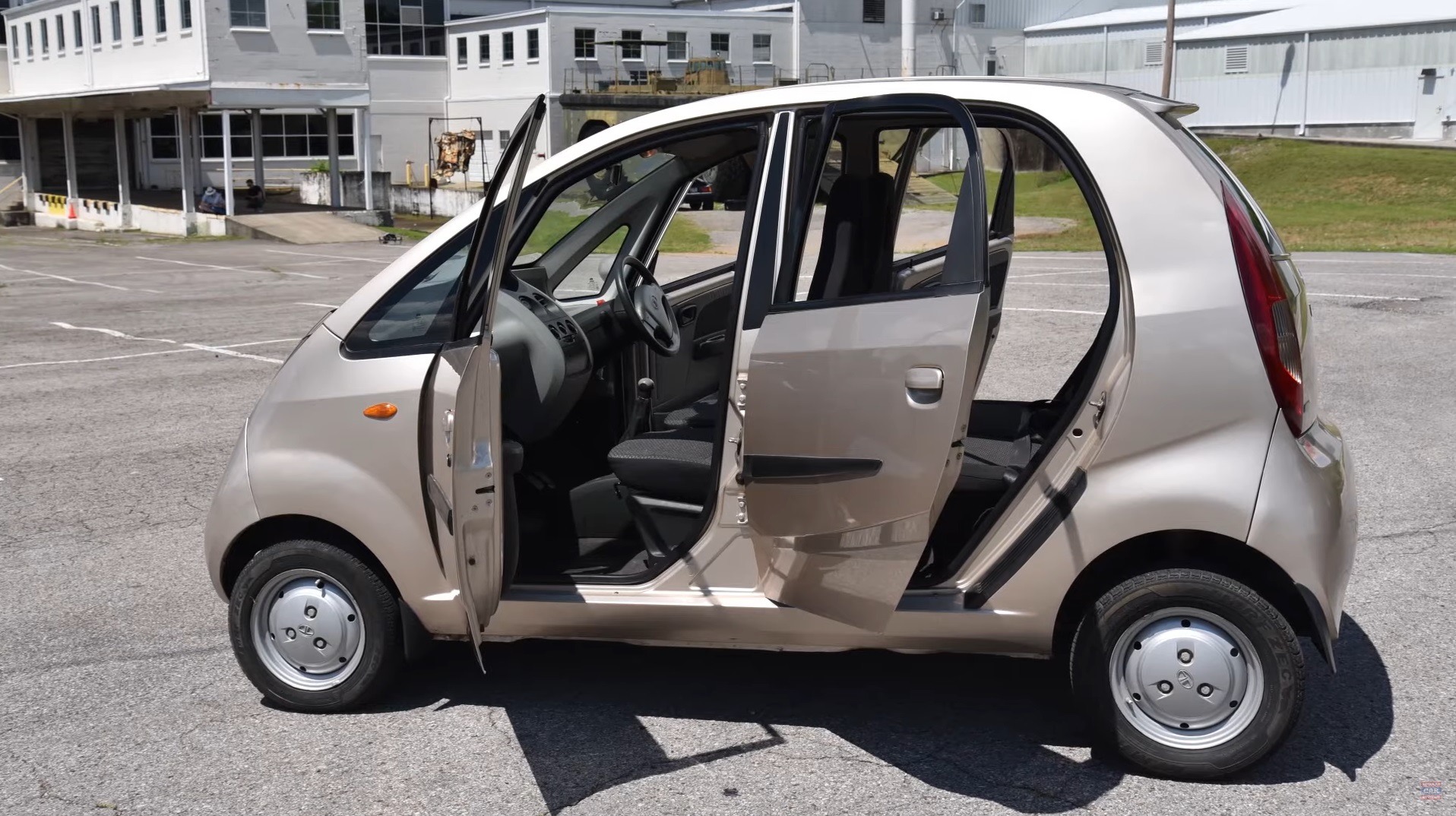Back in 2008, Tata thought it would change the global automotive landscape with the Nano, the world’s cheapest car, which used to cost Indians the equivalent of $2,000 to $3,000, depending on options. Mind you, they weren’t that many to choose from – just power windows, a passenger side mirror and… not much else.
The Nano doesn’t have some things normally found in cars that are half a century old. You don’t get a glove box, tachometer, power steering and fuel filler door, so filling the tank with gasoline is done through the trunk. Even accessing the rear-mounted 38 horsepower, 624 cc engine, connected to the 4-speed manual gearbox, is an arduous process as the tailgate does not open, so you’ll have to remove the rear seat.
Unsurprisingly, given the pathetic engine output, the 0-60 mph (0-96 km/h) sprint takes about 30 seconds, and top speed is a laughable 65 mph (105 km/h). However, in this weird mix of drastic cost-cutting measures and the sense of losing which decade (or century) you’re actually in, there is one good thing, and that’s the fuel consumption. The Nano does 55 mpg (4.2 lt/100 km), if you care about stuff like this, anyway.
All of the above, though, pale in comparison to how the Nano drives: it is actually a scary experience. It’s too tall for a light car, the suspension travel is too long, it has the aerodynamics of a shoe box and extremely narrow tires. As a result, even a passing motorcycle will rock it, not to mention that applying the brakes is a different experience all the time.
Jaguar Land Rover’s parent company, Tata Motors, didn’t sell that many Nanos either as it initially anticipated. From a projected 250,000 units annually, it shifted about 7,000 in the first year, and a bit more in the 2016 and 2017 MY, before pulling the plug on it last year. And that’s okay, really, because the world does want to forget the car that makes the Fiat Multipla look like a Ferrari, both to look at and to drive. Did we mention that it tends to burn to a crisp, too?





